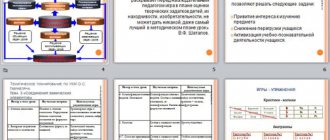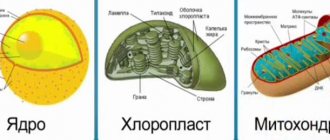Presentation on chemistry on the topic “Coal” Completed by Denis Bortnikov, 10th grade. - presentation
Presentation on chemistry on the topic “Coal” Completed by Denis Bortnikov, 10th grade
For two decades in a row, coal was in the shadow of the oil boom. Mountains of unsaleable coal rose into the sky. Numerous mines were closed, hundreds of thousands of miners lost their jobs. The Appalachian region of the United States, once a thriving coalfield, has become one of the world's darkest disaster areas. The disorderly transition to cheap, imported oil, mainly from the Middle East, under pressure from monopolies, doomed coal to the role of a Cinderella with no future. However, this did not happen in a number of countries, including the former USSR, which took into account the advantages of an energy structure based on national resources.
Coal deposits Coal reserves are dispersed throughout the world. Most industrial countries are not deprived of them. The earth is surrounded by two rich coal zones. One extends through the countries of the former USSR, through China, North America to Central Europe. The other, narrower and less rich, runs from southern Brazil through South Africa to Eastern Australia. The most significant deposits of hard coal are located in the countries of the former USSR, the USA and China. Coal dominates in western Europe. The main coal basins in Eurasia: South Wales, Valenciennes-Liège, Saar-Lotarginsky, Ruhrsky, Asturian, Kizelovsky, Donetsk, Taimyrsky, Tungussky, South Yakutsky, Funshunsky; in Africa: Jerada, Abadla, Enugu, Huanqui, Witbank; in Australia: Great Syncline, New South Wales; in North America: Green River, Junnta, San Juan River, Western, Illinois, Appalachian, Sabinas, Texas, Pennsylvania; in South America: Carare, Junin, Santa Catarina, Concepcion. In Ukraine, the Lviv-Volyn basin and the Donbass, rich in deposits, should be noted. The largest deposits of coal. these are the Tunguska, Kuznetsk, Pechora basins - in Russia; Karaganda - in Kazakhstan; Appalachian and Pennsylvania basins - in the USA; Ruhrsky - in Germany; Great Yellow River - in China; South Wales - in the UK; Valenciennes - in France, etc.
How and with what help coal was formed. Coal is the remains of plants that died many millions of years ago, the decay of which was interrupted as a result of the loss of air supply. Therefore, they could not release the carbon taken from it into the atmosphere. The access of air ceased especially abruptly where swamps and swampy forests sank as a result of tectonic movements and changes in climatic conditions and were covered with other substances. At the same time, plant remains were transformed under the influence of bacteria and fungi (coalified) into peat and further into brown coal, hard coal, anthracite and graphite. Based on the composition of the main component - organic matter, coals are divided into three genetic groups: humolites, sapropelites, saprohumolites. Humolites predominate, the starting material of which was the remains of higher land plants. Their deposition occurred mainly in swamps that occupied the low-lying coasts of seas, bays, lagoons, and freshwater basins. As a result of biochemical decomposition, the accumulating plant material was processed into peat, with a significant influence on the water content and chemical composition of the aquatic environment. The carbon content of hard coal ranges from 75 to 90 percent. The exact composition is determined by the location and conditions of coal transformation. Mineral impurities are either in a finely dispersed state in the organic mass, or in the form of thin layers and lenses, as well as crystals and nodules. The source of mineral impurities in fossil coals can be inorganic parts of coal-forming plants, mineral new formations that precipitate from water solutions circulating in peat bogs, etc. The composition of mineral impurities is quartz, clay minerals, feldspars, pyrite, marcasite, carbonates and other compounds containing [pic] Most of the mineral impurities turn into ash when burned.
The technique used to extract coal.
As a result of prolonged exposure to elevated temperatures and pressure, brown coals are transformed into hard coals, and the latter into anthracite. The irreversible process of gradual changes in the chemical composition, physical and technological properties of organic matter at the stage of transformation from brown coals to anthracites is called coal metamorphism. The structural and molecular rearrangement of organic matter during metamorphism is accompanied by a consistent increase in the relative carbon content in coal, a decrease in the oxygen content, and the release of volatile substances; the hydrogen content, calorific value, hardness, density, fragility, optics, electricity and other physical properties change. Hard coals at the middle stages of metamorphism acquire sintering properties - the ability of gelified and lipoid components of organic matter to transform when heated under certain conditions into a plastic state and form a porous monolith - coke. In zones of aeration and active action of groundwater near the Earth's surface, coals undergo oxidation. In terms of its effect on the chemical composition and physical properties, oxidation has the opposite direction compared to metamorphism: coal loses its strength properties and sinterability; the relative content of oxygen in it increases, the amount of carbon decreases, humidity and ash content increases, and the heat of combustion sharply decreases. The depth of oxidation of fossil coals, depending on modern and ancient topography, the position of the groundwater table, the nature of climatic conditions, material composition and metamorphism, ranges from 0 to 100 meters vertically.
Application. The specific gravity of coal is 1.2 - 1.5 g/cm3, calorific value is in J/kg. Hard coal is considered suitable for technological use if after combustion the ash is 30(or less). Primitive mining of fossil coals has been known since ancient times (China, Greece). Coal began to play a significant role as a fuel in England in the 17th century. The formation of the coal industry is associated with using coal as coke in the smelting of cast iron. Since the 19th century, a major consumer of coal is transport. The main areas of industrial use of coal are: production of electricity, metallurgical coke, combustion for energy purposes, and the production of various (up to 300 types) products through chemical processing. Consumption is increasing coals for the production of high-carbon carbon-graphite structural materials, rock wax, plastics, synthetic, liquid and gaseous high-calorie fuels, aromatic products by hydrogenation, high nitrous acids for fertilizers.Coke obtained from coal is needed in large quantities by the metallurgical industry.
Coke is produced at coke plants. Coal is subjected to dry distillation (coking) by heating in special coke ovens without air access to a temperature [pic]C. This produces coke - a solid porous substance. In addition to coke, dry distillation of coal also produces volatile products, which, when cooled to C, form coal tar, ammonia water and gaseous products. Coal tar undergoes fractional distillation, resulting in several fractions: It can be obtained from coal. - light oil (boiling point up to 170 C) it contains aromatic hydrocarbons (benzene, toluene, acids and other substances; - medium oil (boiling point C). These are phenols, naphthalene; - heavy oil (boiling point C). This naphthalene and its homologues - anthracene oil - anthracene, phenanthrene, etc.
Compound. The composition of gaseous products (coke oven gas) includes benzene, toluene, xyols, phenol, ammonia and other substances. After purification from ammonia, hydrogen sulfide and cyanide compounds, crude benzene is extracted from coke oven gas, from which individual hydrocarbons and a number of other valuable substances are isolated. Amorphous carbon in the form of coal, as well as many carbon compounds, play a vital role in modern life as sources of various types of energy. When coal burns, it produces heat that is used for heating, cooking, and many industrial processes. Most of the heat received is converted into other types of energy and spent on performing mechanical work. Coal is a solid fuel, a mineral of plant origin. It is a dense rock of black, sometimes dark gray color with a shiny matte surface. Contains 75-97% carbon, 1.5-5.7% hydrogen, 1.5-15% oxygen, 0.5-4% sulfur, up to 1.5% nitrogen, 2-45% volatile substances, the amount of moisture varies from 4 to 14%. The highest calorific value calculated for the wet ash-free mass of coal is not less than 238 MJ/kg.
Coal is formed from the decomposition products of organic substances of higher plants, which have undergone changes under pressure conditions of various rocks of the earth's crust and under the influence of temperature. With an increase in the degree of metamorphism in the combustible mass, coal increases the carbon content and at the same time reduces the amount of oxygen, hydrogen, and volatile substances. The heat of combustion of coal also changes. Characteristic physical properties of coal: - carbon content (C,%); - density (g/cm 3) – 1.28-1.53; — mechanical strength (kg/cm2) – ; — specific heat capacity C (Kcal/g deg) – ; — light refractive index – 1.82-2.0
Application. The uses of coal are varied. It is used as a household, energy fuel, raw material for the metallurgical and chemical industries, as well as for the extraction of rare and trace elements from it. The coal, coke and chemical industries, and heavy industries process coal using the coking method. Coking is an industrial method of processing coal by heating to C without air access. The main coke-chemical products are: coke oven gas, products from the processing of crude benzene, coal tar, and ammonia.
Hydrocarbons are removed from coke oven gas by washing in scrubbers with liquid absorption oils. After distillation from the oil, distillation from the fraction, purification and repeated rectification, pure commercial products are obtained, such as benzene, toluene, xylenes, etc. From the unsaturated compounds contained in crude benzene, coumarone resins are obtained, which are used for the production of varnishes, paints, linoleum and in the rubber industry. Cyclopentadiene, which is also obtained from coal, is also a promising raw material. Coal is the raw material for the production of naphthalene and other individual aromatic hydrocarbons. The most important processing products are pyridine bases and phenols. Through processing, a total of more than 400 different products can be obtained, the cost of which, compared to the cost of coal itself, increases several times, and the by-products obtained at coke plants exceed the cost of the coke itself.
The combustion (hydrogenation) of coal to form liquid fuel is very promising. To produce 1 ton of oil, 2-3 tons of coal are consumed. Artificial graphite is obtained from coal. They are used as inorganic raw materials. When processing hard coal, vanadium, germanium, sulfur, gallium, molybdenum, zinc, and lead are extracted from it on an industrial scale. Ash from coal combustion, mining and processing wastes are used in the production of building materials, ceramics, refractory raw materials, alumina, and abrasives. In order to optimally use coal, it is enriched (removing mineral impurities). Compound. Coal contains up to 97% carbon; it can be said to be the basis of all hydrocarbons, i.e. They are based on carbon atoms. Often we encounter amorphous carbon in the form of coal. In structure, amorphous carbon is the same as graphite, but in a state of extremely fine grinding. The practical applications of amorphous forms of carbon are varied. Coke and coal are used as reducing agents in metallurgy for iron smelting.
As can be seen from the above abstract review, coal is an integral part of our life. The diverse use of coal in almost all sectors of the national economy presupposes its further extraction and processing. Sources of information: Internet, library.
Chemistry lesson notes with presentation, 9th grade. Carbon and its compounds
Carbon and its compounds.
Summary of a lesson in chemistry for 9th grade students Author:
Desyatkin Alexander Afanasyevich, chemistry teacher MBOU Secondary School No. 1 p.
Novobelokatay, Belokataysky district of the Republic of Bashkortostan. Description of the material: I offer you a lesson summary for 9th grade students on the topic: “Carbon and its compounds.” This material will be useful for teachers and students to study the above topic. This material is designed for two lessons. The lesson uses a presentation in which I use a logical-semantic model, which will help you understand the material more easily. Lesson name: “Clean Coal” Topic: “Carbon and its compounds” Purpose: To consider the features of the electronic structure of the carbon atom based on the position of this element in the periodic table of chemical elements; expand students’ knowledge about allotropy using the example of allotropic modifications of carbon: give an idea of the phenomenon of adsorption, the greenhouse effect; study the chemical properties of carbon; introduce carbon compounds. Equipment and reagents: Presentation “Carbon and its compounds.”
"The crystal lattice of diamond." "The crystal lattice of graphite." Periodic table of chemical elements by Dmitry Ivanovich Mendeleev. Table of solubility of substances. Lime water, litmus, marble, matches, crucible tongs, test tube holder, test tubes, splinter, graphite rod. Collection "Minerals and Rocks". Glass cylinder filled with oxygen Lesson progress
Teacher's introduction. “Clean coal” was first recognized by Antoine Lavoisier, who studied the process of combustion of this substance and other substances in air and oxygen. In the book of Guiton de Morveau, Lavoisier, Berthollet and Fourcroix “Method of Chemical Nomenclature” (1787), the name of this substance appeared instead of the French “pure coal”. Under the same new name, this substance appears in the “Table of Simple Bodies” in Lavoisier’s “Elementary Textbook of Chemistry.” What substance is this text talking about? Student answers. (This is “Carbon” (carbone)). Our lesson is devoted to carbon and its compounds. On the screen is a presentation “Carbon and its compounds” The position of carbon in the periodic system, the structure of the carbon atom. A student at the blackboard draws up a diagram of the structure of the carbon atom, talks about the elementary particles of the nucleus of the carbon atom, its position in the Periodic Table, and makes up the electronic formula of the carbon atom. It is concluded that the carbon atom can exhibit oxidation states of +2, +4 and -4 in compounds. Allotropy. What is allotropy? Student answers. (Usually allotropy is defined as the phenomenon of the existence of a chemical element in several crystalline forms.) We watch a video about allotropy. We fill out the diagram as we watch the video: We check the diagram against the presentation slide. Once again we dwell on the areas of application of allotropic modifications of carbon. Diamonds: in the manufacture of jewelry, tools intended for processing hard materials. Graphite: as a neutron moderator in nuclear reactors, production of electrodes, production of pencils, heat-resistant crucibles, as an adsorbent, lubrication of rubbing parts of mechanisms. Graphene: introduction into plastic to make it electrically conductive; graphene-based sensors can detect dangerous molecules; the use of graphene powder in electric batteries to increase their efficiency; optoelectronics; stronger, more durable and lighter plastic. Fullerene: the addition of fullerenes to cast iron gives it ductility; in ceramic products, the introduction of fullerenes reduces the coefficient of friction; the use of fullerenes in polymer composites can increase its strength characteristics, thermal stability and radiation resistance, and significantly reduce the coefficient of friction; micro-additive of fullerene carbon black to concrete mixtures and sealing compounds increases the grade of the material. Carbon in nature. Teacher's story about the presence of carbon in nature with a demonstration of a presentation slide and the collection “Minerals and Rocks.” The carbon content in the earth's crust is 0.1% by mass. Free carbon is found in nature in the form of diamond and graphite. The bulk of carbon is in the form of natural carbonates, fossil fuels - anthracite, brown coal, bituminous coal, oil shale, oil, combustible natural gases, peat, as well as bitumen, etc. In the atmosphere and hydrosphere it is found in the form of carbon dioxide CO2, in the air 0.046 % CO2 by mass in the waters of rivers, seas and oceans is ~60 times higher. Carbon is found in plants and animals. Carbon enters the human body with food. The total carbon content in the human body reaches about 21%. Carbon makes up 2/3 of muscle mass and 1/3 of bone mass. It is excreted from the body mainly through exhaled air and urine. The carbon cycle in nature includes the biological cycle, the release of CO2 into the atmosphere during the combustion of fossil fuels, from volcanic gases, hot mineral springs, from the surface layers of ocean waters, etc. The biological cycle consists of the fact that carbon in the form of CO2 is absorbed from the troposphere by plants. Then from the biosphere it returns again to the geosphere: with plants, carbon enters the body of animals and humans, and then, when animal and plant materials rot, into the soil and in the form of CO2 into the atmosphere. Chemical properties. Write down the equations of the reactions indicated on slide 2 of the presentation. Students go to the board and write down reaction equations. We check the notes on slide 6 of the presentation. С0 +О20 = С+4О2-2 + 402 kJ 2С0 +О20 = 2С+2О-2 (incomplete combustion) С0 +2Сu+2О0 = С+4О2-2 + 2Cu0 С0 +2H20 = С-4H4+1 2С0 +Ca0 = Ca+2C2-1 3C0 +4Al0 = Al4+3C3-4 Demonstration of experiment: combustion of a smoldering splinter in oxygen. Carbon monoxide A student's story about carbon monoxide using material from slide 7 of the presentation.
Carbon monoxide, formula - CO, is one of the most poisonous gaseous compounds.
In sufficient concentrations, carbon monoxide, the properties of which explain its high chemical activity, is extremely dangerous to human life and health. The essence of such poisoning lies, first of all, in the fact that the molecules of this compound instantly bind hemoglobin in the blood and deprive it of its ability to carry oxygen. What are its main physical properties: • colorless gas, tasteless and odorless; • extremely low melting and boiling points: -205 and -191.5 C0; • density 0.00125 g/cc; • very flammable with a high combustion temperature (up to 2100 C0). Chemical properties:
Under normal conditions, CO is inert; when heated, it is a reducing agent.
CO is a non-salt-forming oxide. 1. Interacts with oxygen: 2CO + O2 = 2CO2 2. Interacts with metal oxides: CO + FeO = Fe + CO2 3. Interacts with chlorine: CO + Cl2 = COCl2 Carbon dioxide Student’s story about carbon monoxide using material from slide 8 of the presentation.
Carbon dioxide (formula CO2) is a colorless, sour-tasting gas that is soluble in water.
It is also odorless. If it is cooled properly, it forms a snow-like mass called dry ice. The air always contains a small amount of carbon dioxide, about 1 liter in 2560 liters of air. Most carbon dioxide enters the air when animal and plant tissues made of carbon decompose. Carbon-based fuels, such as wood or coal, produce large amounts of carbon dioxide when burned. The human body requires small amounts of carbon dioxide to survive. It controls the speed of the heart beat and several other body functions. But oversaturation of the body with carbon dioxide can cause harm and even cause death. A person receives oxygen from the air he breathes. Oxygen enters the blood. There it combines with food and turns into carbon dioxide as a result of chemical reactions. Carbon dioxide returns to the lungs and is exhaled. Trees, in turn, have a vital need for carbon dioxide. Green plants absorb carbon dioxide from the air through pores in their leaves. It combines with water, and then with the help of sunlight, the carbon dioxide and water are converted into starch and other food for the plant. The plant releases oxygen. Chemical properties:
CO2 is an acidic oxide.
1. Interacts with water: CO2 + H2O = H2CO3 2. Interacts with bases: CO2 + Ca(OH)2 = CaCO3 ↓+ H2O (Qualitative reaction!) Demonstration of experiment: Turbidity of lime water. When there is an excess of CO2, an acidic salt, calcium bicarbonate, is formed and the precipitate dissolves. 2CO2 + Ca(OH)2= Ca(HCO3)2 3. Reacts with basic oxides: K2O + CO2 = K2CO3 4. Reacts with metals (at elevated temperatures) CO2 + 2Mg = 2MgO +C Carbonic acid. Salts of carbonic acid Story - teacher's conversation using slide 9 of the presentation, also a demonstration of qualitative reactions to carbonates. Chemical formula - H2CO3 Structural formula - all covalent polar bonds: Weak acid, exists only in aqueous solution, very fragile, decomposes into carbon dioxide and water: CO2 + H2O H2CO3 Chemical properties:
1) Dissociation H2CO3 H+ + HCO3- HCO3- H+ + CO32 - 2) with active metals H2CO3 + Ca = CaCO3 + H2↑ 3) with basic oxides H2CO3 + CaO = CaCO3 + H2O 4) with bases H2CO3(ex) + NaOH = NaHCO3 + H2O H2CO3 + 2NaOH = Na2CO3 + 2H2O 5) Very fragile acid - decomposes
Salts of carbonic acid - carbonates and hydrocarbonates Carbonic acid forms two series of salts: Medium salts
- carbonates Na2СO3, (NH4)2CO3
Acid salts
- bicarbonates, hydrocarbonates NaHCO3, Ca(HCO3)2 Qualitative reactions to carbonates: CO32- + H+ GAS CO32- +Ca2+ Sediment 1. Demonstration of experiment: Interaction of marble with hydrochloric acid.
We write the equation of the chemical reaction: CaCO3 + 2HCl = CaCl2 + CO2; + H2O 2. Demonstration of experiment: Interaction of sodium carbonate with calcium chloride. We write the equation of the chemical reaction: CaCl2+ Na2CO3 = CaCO3 + 2NaC l Application of carbon Teacher's story using slide 10 of the presentation.
Carbon and its compounds are of great importance in human life.
The main types of fuel on Earth - natural gas and oil - are formed from carbon. Carbon compounds are widely used in the chemical and metallurgical industries, construction, mechanical engineering and medicine. Allotropic modifications in the form of diamonds are used in jewelry, and fullerenes in rocket science. Much of the carbon is needed to produce sugar. It is also used in the synthesis of organic compounds important for all areas of everyday life. Various lubricants for mechanisms, technical equipment and much more are made from carbon compounds. Homework. Read §29-30, complete task 8 p. 172, task 6 p. 178. Learn the logical-semantic model.
(Each student receives a smaller version of the logical-semantic model - slide 2 of the presentation.) Download Carbon and its compounds. Chemistry lesson notes for 9th grade students
Presentation on the topic: Carbon and its compounds
We recommend watching:
Chemistry lesson notes, grade 9. Oxygen compounds of carbon Synopsis of a chemistry lesson for grade 9. Sulfuric acid Chemistry lesson notes for grade 9 Test tasks in chemistry, grade 9. Halogens and their properties
Similar articles:
Methodological development of a chemistry lesson, grade 9
Chemistry lesson notes for grade 9
Practical work in chemistry grade 9
Game - competition in chemistry in 9th grade
Chemistry quiz with answers for 9th grade






